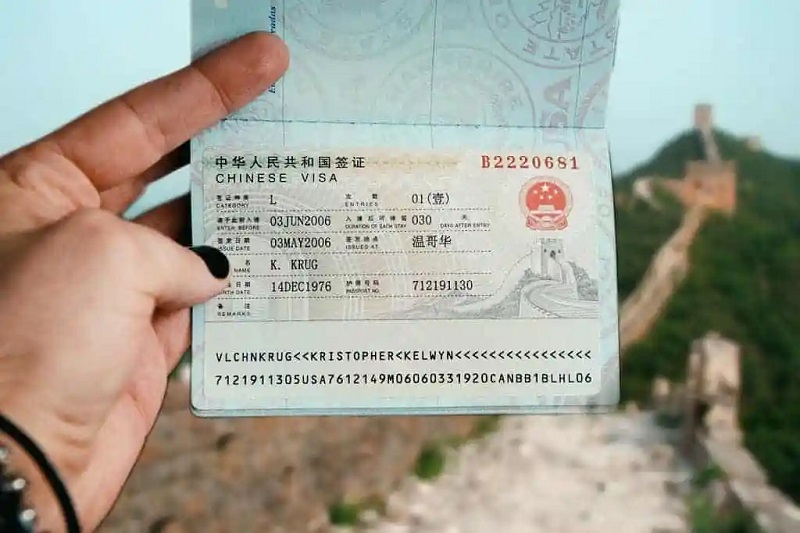Travel to China has become easier in recent years, but visa rules still have important details that trip planners must not miss: the correct visa category, the right supporting documents, biometric requirements, and the possibility of long-term or multi-entry visas for frequent travellers. This guide walks you—step by step—through everything an international tourist needs to know to apply for a China tourist visa (L) and related visitor visas, with practical checklists, timing tips, and troubleshooting advice so your paperwork won’t slow down your trip.
China visa types: pick the right one
China issues a range of ordinary visa categories for foreigners. The most relevant for international tourists are:
- L (Tourism): For leisure travel, sightseeing, independent travel, or package tours.
- M (Commercial/Trade): Business meetings, trade fairs, commercial visits.
- F (Exchange/Non-commercial visits): Academic or cultural exchanges, NGO activities, short voluntary work (often limited).
- Q / S (Family visits & family-related residence): Q1/Q2 (family of Chinese citizens/PRs), S1/S2 (family members of foreigners working or studying in China).
- Z (Work), X1/X2 (Study long/short term), J (Journalist), C (Crew), G (Transit), D (Permanent residence), R (High-level talent): Special purpose categories—apply only if your purpose fits these definitions.
Tip: choose the category that matches your main purpose of travel. If you’re coming to sightsee, apply for L. If you have a mixed trip (business + sightseeing), be honest and select the primary reason—consular decisions consider the stated main purpose.

Visa Application Form ofthe People’s Republic of China
Quick checklist for L (tourism) visa applicants
Before you start the form, gather these essentials (expanded in the next chapter):
- Passport (original) — at least 6 months validity from arrival date and at least two blank visa pages.
- Recent passport-style photo (white background) — digital upload and/or physical photo per embassy specs.
- Proof of legal stay (if not applying with your country’s passport)—residence permit, visa, or student/work ID for the country where you submit the application.
- Travel documents showing itinerary — round-trip flight booking and hotel confirmations with guest name(s), or a formal invitation from a mainland China host/organization.
- Previous Chinese visas and/or previous passports (if applicable) — especially important when applying for longer multiple-entry visas.
Keep copies of every page and a scanned backup. If you’re travelling with family or minors, prepare additional family consent papers and birth certificates as required.
Detailed document guide for L (tourism) applications
Below is an expanded explanation of what consulates and visa centres commonly ask for when you apply for a tourist visa.
Passport & identity documents
- Your original passport must be valid for at least six months beyond your arrival date and should have two blank visa pages for stamping. Some visa centres ask for the passport to be in good condition (no damage).
- If you hold more than one passport or have a previous passport with a Chinese visa, bring those passports or clear scans of relevant pages. This helps when applying for multi-year visas.
Photo
- Prepare a recent colour photo on white background. Typical size: 33×48 mm (portrait) with head height and alignment per embassy requirements. You will usually upload a digital version in the online form and bring a printed physical photo if the upload fails.
Proof of legal stay in the country of application
- If you apply outside your home country (for example, a non-UK national applying in the UK), you must present valid evidence of your legal status in that country: residence card, work permit, valid visa or student ID.
Travel bookings or invitation letter
- Round-trip flight reservation and hotel bookings for every night of your stay help prove your itinerary. Hotel confirmations should ideally show the guest name. Alternately, a formal invitation from a Chinese host (person or organization) can replace bookings—this invitation should detail the purpose, dates, places to visit, and contact information of the inviter.
Minors and family applicants
- Children under 18 often need consent letters signed by both parents, parents’ passports or IDs, and a birth certificate showing parental information. If a single parent applies, include legal documents proving sole custody.
Previous Chinese citizenship or passports
- If you once held a Chinese passport and became a foreign citizen, you may need to provide your most recent Chinese passport and proof of naturalization or change of status; in some cases an FCDO-authenticated document confirming personal data changes is requested.

China Visa
Invitation letters: when and how to get one
An invitation is an official letter from a host in mainland China—useful if you’ll stay with a local or attend an event. There are two common types:
- Invitation by an organization: Official letter on company/government/institution letterhead, signed and stamped, with details of the applicant, travel dates, itinerary, accommodation arrangements, and host contact info.
- Invitation by an individual (Chinese citizen or foreign resident): A signed invitation letter plus identity proof of the inviter: a photocopy of their Chinese ID or travel permit, or passport and residence permit if the inviter is a foreign resident in China.
Make sure the inviter includes your full legal name and correct passport number, the exact entry and exit dates, and where you’ll stay. Consulates scrutinize invitation letters for authenticity—ask the inviter to provide clear contact details and an organizational stamp if applicable.
Biometrics & in-person attendance
Fingerprints and interviews
China has rolled out biometric (fingerprint) collection in many consulates and visa centres. Applicants are commonly required to submit ten fingerprints in person, although there are exceptions (usually for children under 14 and seniors over 70, or in rare medical cases). Visa centres may require you to appear in person for collection and to sign confirmation forms.
If you apply through a third-party agency, the agency or authorized person may still need to confirm your attendance for fingerprint capture; in many locations you cannot fully bypass the in-person requirement.
What if your fingerprints can’t be taken?
If a person’s fingerprints cannot be collected due to injury or mutilation, embassies consistently provide special contact paths and will advise alternative procedures—bring medical proof if applicable.
Visa processing times, service levels & fees
Processing speeds vary by consulate and season. The typical service options offered by Chinese Visa Application Centers are:
- Regular service: Usually 4 working days.
- Express service: Usually 3 working days (availability may vary and can be suspended regionally).
- Rush/urgent service: Usually 2 working days for approved humanitarian or urgent situations (supporting documents often required).
Note: first-time applicants and certain visa types (e.g., F, M, X1/X2, Z) may not be eligible for express or rush services—plan ahead. Always check the visa centre website for the city where you apply because procedures and available services can differ.
China Visa Application Service Center: https://www.visaforchina.cn/
Fees: consular fees depend on your nationality and whether you apply through a visa centre; add handling fees if you use a third-party service. Confirm current fees on your local Chinese embassy/visa centre website before submitting.
Multi-entry, 5-year and 10-year visas (who gets them?)
Some nationalities benefit from long-term multi-entry visas. For example, the Chinese Embassy and Consulates in the UK have issued notices allowing 5-year or 10-year multiple-entry visas for British citizens applying for tourism (L), business (M), short-term family visit (Q2), or short-term personal affairs (S2), provided they meet certain conditions. If you’ve held multiple prior Chinese visas, you may be eligible for multi-year validity—bring all prior Chinese visas when applying.
If you’re a frequent traveller to China, ask your local visa centre about options for 2/5/10-year multiple-entry visas—policies change periodically, and eligibility can depend on past visa history, nationality, and purpose of travel.
China Visa’s Common problems and how to fix them
“My photo upload keeps failing”
- Bring printed photos that meet embassy standards (33×48 mm, white background). Visa centres usually accept a paper photo if the online upload fails.
“I’m applying from a country where I’m not a citizen”
- Bring proof of legal status: residence permit, valid local visa, or student/work ID. If you are a temporary visitor to that country, consulates may reject an application—apply from your country of residence whenever possible.
“I have an expired passport that contains a valid Chinese visa”
- An expired passport with a valid Chinese visa may still be used for travel only when presented together with a new passport that bears the same name, sex, date of birth and nationality. If any of those changed between passports, you generally need a new visa. Bring both passports to the visa counter and the airline.
“My fingerprints were requested but I can’t get to the visa centre”
- Fingerprint capture is commonly mandatory; most centres insist applicants appear in person. If you cannot attend due to disability, injury, or exceptional circumstances, contact the visa centre or embassy immediately to request an exemption or alternative arrangement.
“I need my visa faster than usual”
- Ask the visa centre about express or urgent service and confirm eligibility. Some visa types are excluded. Provide evidence of the urgent need (medical emergency, sudden business trip). Expect higher fees for expedited handling.
Step-by-step application flow of China Visa
- Decide which visa type matches your trip (L for tourism).
- Gather documents: passport, photo, itinerary or invitation, proof of legal stay (if required), previous China visas/passports (if any).
- Fill the online application form at the official visa portal for your consulate (many missions now use an online form and appointment system). Upload a digital photo if requested. (https://www.visaforchina.cn/EDI3_EN/qianzhengyewu/jichuzhishi/tianxieyangli)
- Book an appointment at the Chinese Visa Application Service Centre or embassy consular section. Some centres accept walk-ins for document drop-off, but appointments are common.
- Attend in person if biometric collection is required (fingerprints). Bring originals and copies. Pay the visa fee and any service charges.
- Wait for processing: regular service ~4 working days; express ~3; rush ~2 (where available). Collect your passport in person or by courier as permitted.

Apply for a Chinese visa online
Practical Chinese travel tips & pre-departure checklist
- Renew early: if your passport has less than 6 months validity before your arrival date, renew it. Chinese immigration is strict about passport validity and blank pages.
- Scan everything: keep scanned copies of your passport data page, visa, flight bookings, hotel confirmations, and invitations in cloud storage and email them to yourself.
- Allow time for biometric appointments: during peak seasons (Chinese holidays, summer), visa centre appointments and processing can be slower—apply at least 3–4 weeks before travel.
- Check transiting rules: some travellers qualify for visa-free transit or short stays—check the ports and eligibility if you’re only transiting through China. (Transit policies can change—verify before booking.)
- Use official channels: complete the online form and check local embassy/consulate pages or the Chinese Visa Application Service Center for the city where you apply—procedures and contact info differ by location.
Closing notes – consular discretion & final reminders
Consular officers make the final decision on whether to issue a visa and set its validity, duration of stay, and number of entries. Even if you submit a perfectly prepared application, issuance is at the embassy’s discretion. If the officer requests additional documents or an interview, respond promptly to avoid delays.







